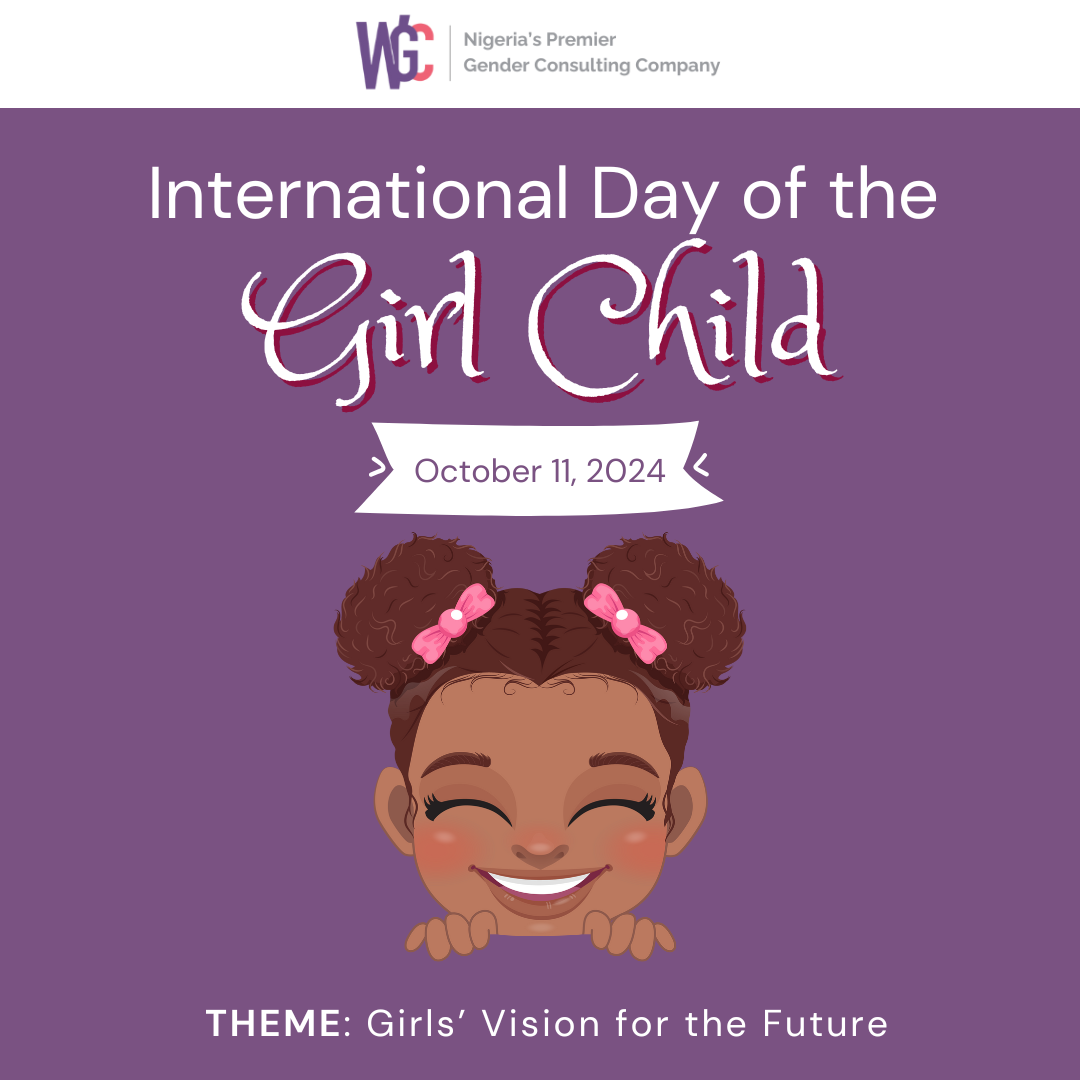Every year, on October 11th, the world commemorates the International Day of the Girl Child, a day set aside to recognize girls’ rights and the unique challenges girls face around the world.
The theme for this year is “Girls’ vision for the future,” which presupposes that the future that girls inhabit should be one that they co-design and co-create.

Unfortunately, judging by the rate of progress in gender equality and meaningful inclusion, we are far from making this a reality. Girls are often saddled with pervasive forms of gender inequality that cascade in slowing their progress across multiple indices including health, education, and the economy.
According to data from the World Bank, 100 of every 1000 girls aged 15-19 gave birth in Nigeria in 2022. Globally, in 2023, the adolescent birth rate for girls aged 10-14 was estimated at 1.5 per 1000 with higher rates in Sub-Saharan Africa at 4.4, even higher than Latin America and the Caribbean at 2.3, according to data from the World Health Organization.
It is no wonder then that in 2023, the labour force participation – the proportion of the population aged 15 and older that is economically active, according to the World Bank – for females was 52.2%, while it was 65.9% for men.
WHY IS ANY OF THIS IMPORTANT?
Girls’ vision for the future is for one where systemic barriers to gender equality are eliminated; one where every girl can leverage her potential for the greatest good of herself, her larger community, and consequently, the nation at large.
But this will not just happen. We have to make it happen.
And so, on this International Day of the Girl Child, we must prioritise action over rhetoric in our building of a world where girls can envision themselves in the future they want to live in.
THREE CRITICAL AREAS OF CONCERN
- Education
According to the United Nations Children’s Fund (UNICEF), in 2023, 7.6 million girls were not in school, with Nigeria accounting for 15% of out-of-school children globally.
Girls’ access to education impacts realities including early and forced child marriage, child labour, and access to opportunities that can provide a viable pathway to future economic empowerment.
In order to advance girls’ education, we must;
- Remove barriers that impact girls’ attendance in school by providing consistent access to water, sanitation, and hygiene facilities including clean water, access to sanitary pads, and clean toilets.
- Distribute domestic chores equitably among children. Especially in lower income areas, girls’ being saddled with numerous responsibilities and chores in the mornings is a major reason why they are late to school or don’t even go at all.
- Progressively close the gender digital gap by facilitating access to digital devices and digital skill building for girls’.
- Health
According to the World Health Organization, one in seven 10-19 year olds experiences a mental disorder, accounting for 13% of the global burden of disease in this age group.
In 21 out of 41 countries with data, over a third of girls aged 15-19 years old are anaemic, due to insufficient amounts of iron in their food and blood loss from menstrual flow, resulting in cognitive and physical deficits in children. Adolescent pregnancy is still a reality, with 15 million of the 135 million live births globally being among girls aged 15 to 19.
In focusing on girls’ health, we must move from the binary that posits physical health as the only expression of health, and expand its definition to include mental, sexual, and reproductive health.
In order to advance girls’ health, we must;
- Expand access to sexual and reproductive health services, ensuring that girls are taught in age-appropriate ways about their bodies in ways that are devoid of shame.
- Design focused health services for pregnant adolescent girls’, ensuring their education and future is not jeopardised as a result of current realities.
- Provide access to and encourage uptake of mental health services.
- Violence Against Girls
Violence against girls takes on many forms including child, early, and forced marriage, physical violence, sexual violence, female genital mutilation, and femicide.
According to the United Nations Population Fund, Nigeria ranks 11th in countries with the highest number of child marriage globally, with more than 4 in 10 Nigerian women younger than 18, married or in union. 1 of 5 girls in Nigeria under the age of 19 has begun the process of childbearing with an increased occurrence in teenagers in rural areas versus those in urban areas.
In order to address violence against girls, we must;
- Tangibly invest in preventing violence against girls by prioritising awareness, education, and community-led initiatives.
- Operationalize the relevant legal frameworks on violence against girls, ensuring that perpetrators are arraigned and tried quickly.
- Creatively engage men and boys in challenging the prevailing gender norms at the base of these expressions of violence.
Our shared vision for a just future for girls is one that requires all of our participation, in big and seemingly small ways. We must not let them, and ourselves, down.
